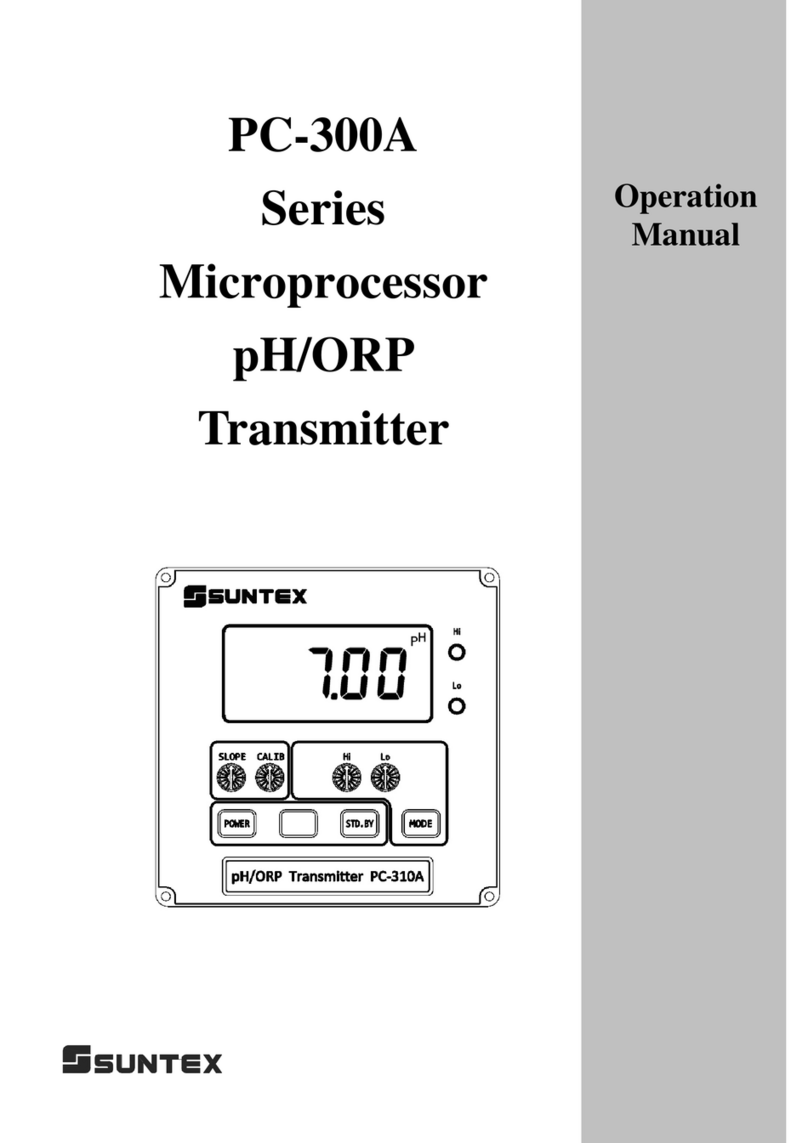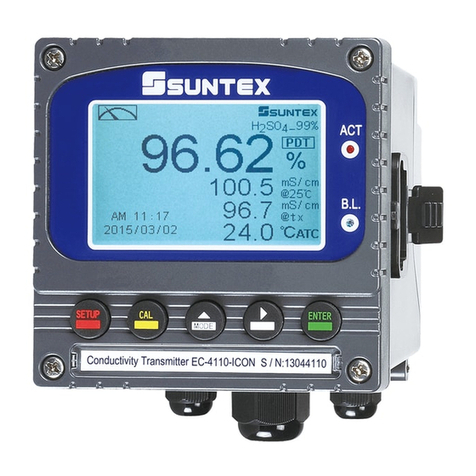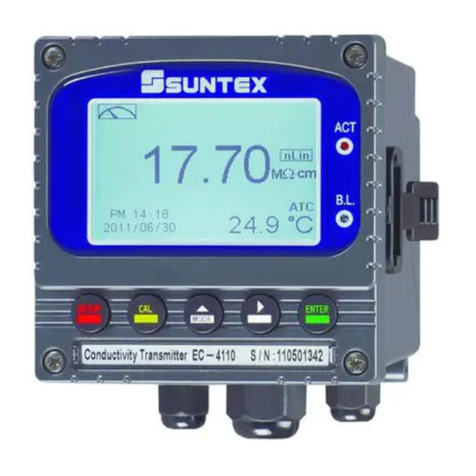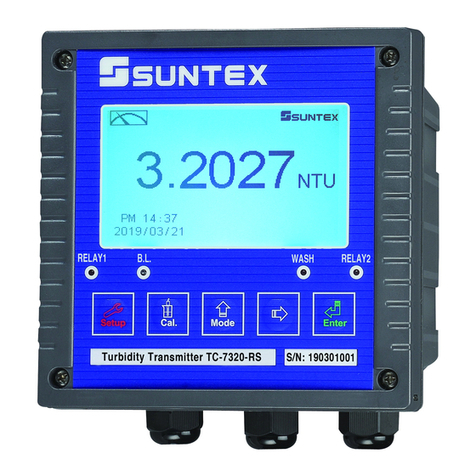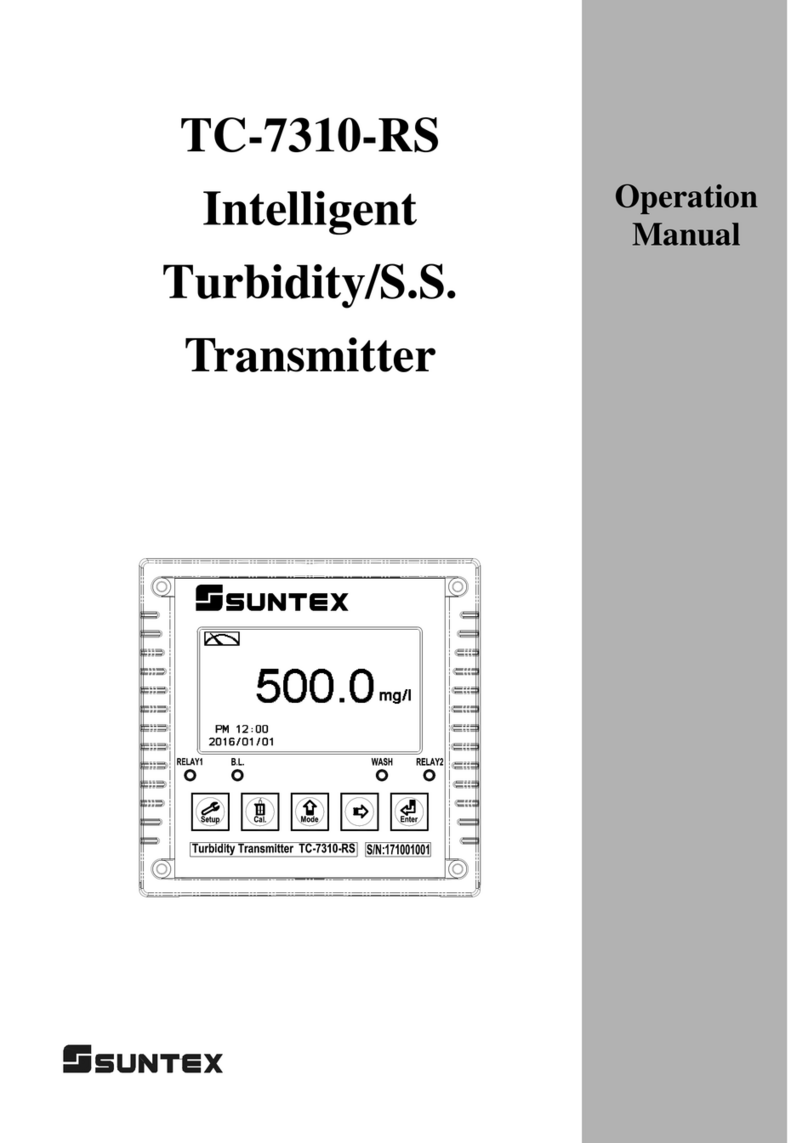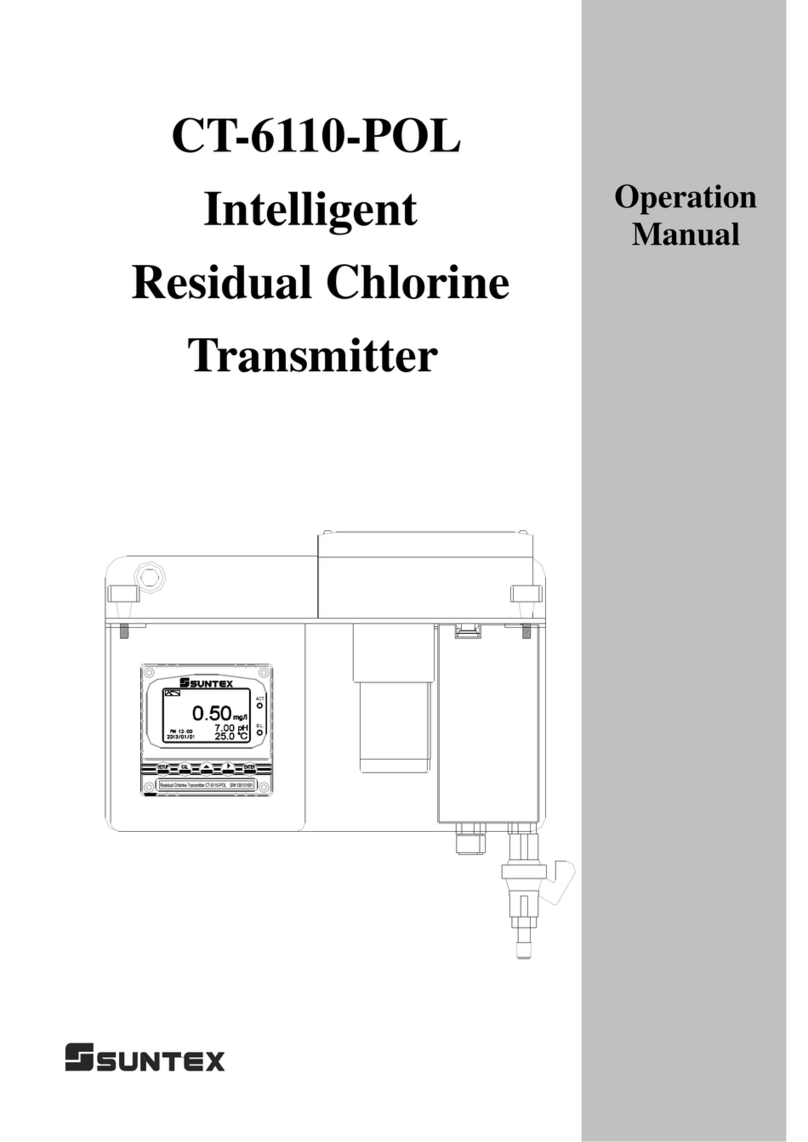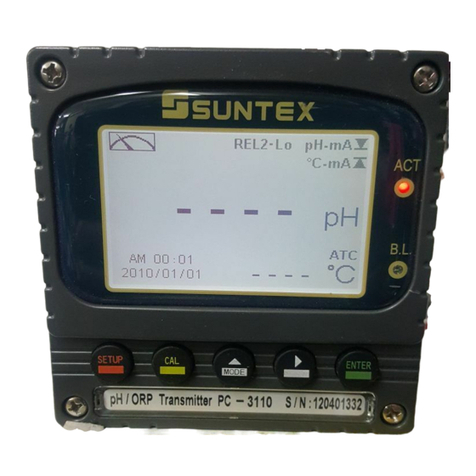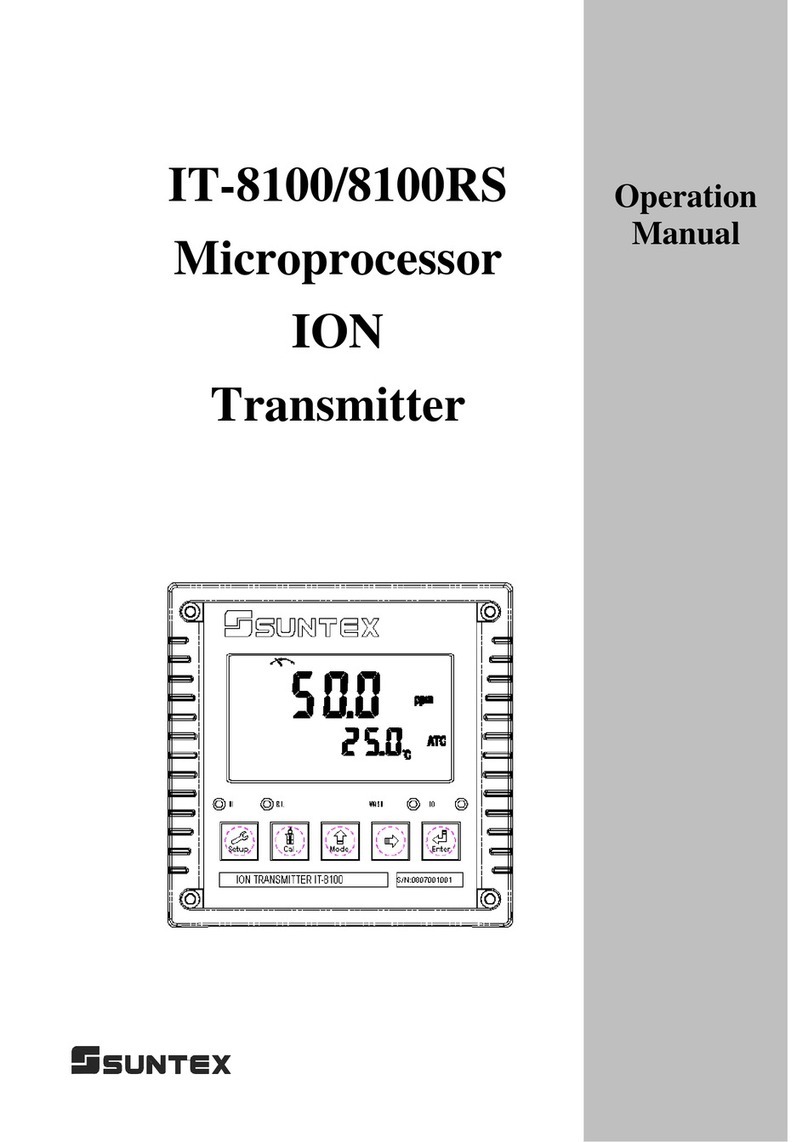
Thank you for purchasing Suntex products. In order to continually improve and enhance the transmitter’s
function, Suntex reserves the right to modify the content and icon display of the product. The actual situation
is subject to the instrument without notice. The operation manual is only provided for function and
installation description, Suntex Instruments Co., Ltd. is not liable for any person or entity for any direct or
indirect loss or damage due to improper usage of this product. If you have any questions or find omission,
negligence or mistakes of the operation manual, please contact with our staff, thank you.
Precautionsforinstallation
Wrong wiring will lead to breakdown or electrical shock of the instrument, please read this
operation manual clearly before installation.
Make sure to remove AC power from the transmitter before wiring input, output connections,
and remove it before opening the transmitter’s housing.
The installation site of the transmitter should be good in ventilation and avoid direct
sunshine.
The material of signal cable should be special coaxial cable. Strongly recommend using our
coaxial cable. Do not use normal wires instead.
Avoid electrical surge when using power. Especially when using three-phase power, use
ground wire correctly. If the power surges interference occurs, separate the power supply of
transmitter from the control device, such as: dosing machines, mixers, etc. to make individual
power supply for the transmitter; or set surge absorber to reduce the power surges at all
electromagnetic switches and power control device coils.
The internal relay contact of the instruments is for alarm or control function. Due to safety,
please must connect to external relays which can stand enough ampere to make sure the
safety operation of the instrument.(Please refer to chapter 3.7“Illustration of electrical
connection”)

